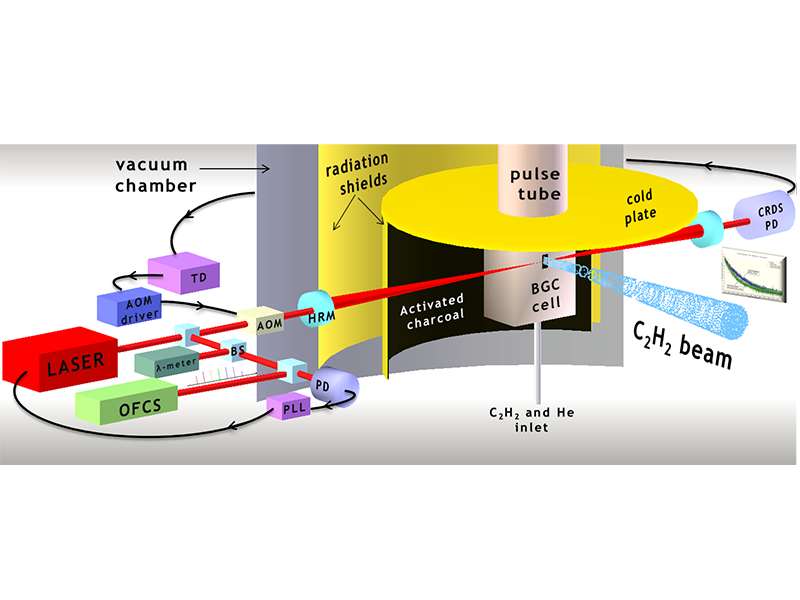Buffer gas cooling of molecules

Layout of the experimental setup for precision spectroscopy of cold ground-state molecules, consisting of two main blocks: the buffer-gas-cooling source and the optical-frequency-comb-referenced laser spectrometer.
Description
Buffer gas cooling (BGC) represents today the main road for producing low-temperature ground-state molecules in the range of a few K, both for the implementation of secondary cooling/trapping strategies towards the achievement of quantum degeneracy and for a spectroscopic interrogation. In particular, cooling of internal and translational temperatures considerably improves the quality of ro-vibrational spectra, which exhibit reduced congestion, enhanced absorption cross sections, and narrow Doppler linewidths or, in nonlinear saturation spectroscopy, reduced transit-time broadening.
Lately, by combining frequency-comb-assisted saturated cavity ring-down spectroscopy with the buffer-gas-cooling technique, we have demonstrated a general approach to Lamb-dip ro-vibrational measurements on cold stable molecules. Absolute frequency metrology of the recorded spectra is guaranteed by referencing to the Cs-clock primary standard via the National Optical Fiber Link. Significant technological upgrades, addressing both the BGC source and the spectroscopic method are underway in order to substantially enhance the accuracy with which center frequencies of ro-vibrational transitions are measured, mainly directed to improved tests of fundamental Physics.
Furthermore, a second-generation BGC setup is under construction, aimed at carrying out a molecular laser cooling/confinement experiment.
To know more
INO Staff
De Natale PaoloDe Rosa MaurizioDelli Santi Maria GiuliaDi Sarno ValentinaMaddaloni Pasquale (Contact Person)Ricciardi Iolanda
